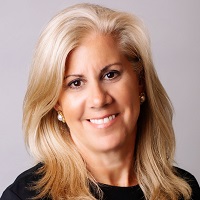Fall Financial Check-In: How Balanced Is Your Portfolio?
Here are four things to consider when building your portfolio and making sure it's optimized for the best possible outcome.


If you are new to investments, it can be hard to know where to start in the process. While there is no perfect science to building an investment portfolio, it is important to remember that investing is not a “set it and forget" strategy. Conducting regular check-ins with an adviser can help ensure you’re making the most of your investible assets.
Fall is a great time to do just that, and like or not, it is coming fast. Take a moment to assess your financial standing and consider the various factors that might impact your portfolio: short- and long-term goals, changes in income and tolerance for risk. Working with a financial adviser is also a great strategy to help manage your assets and understand the factors that go into building a balanced portfolio. Having this understanding will only strengthen your collaboration with the adviser to help assess any life updates or changes as needed.
Below are four considerations when building a balanced portfolio:
From just $107.88 $24.99 for Kiplinger Personal Finance
Become a smarter, better informed investor. Subscribe from just $107.88 $24.99, plus get up to 4 Special Issues

Sign up for Kiplinger’s Free Newsletters
Profit and prosper with the best of expert advice on investing, taxes, retirement, personal finance and more - straight to your e-mail.
Profit and prosper with the best of expert advice - straight to your e-mail.
1. Asset allocation
It’s important to understand basic asset allocation — the variety of different assets you can have in your portfolio, such as stocks, bonds and cash, alternatives and the role they play. Consider maintaining a healthy mix of these in your portfolio to help you achieve your goals.
Remember that the performance of these assets varies over time, so diversifying your investments may help reduce the risk level in your portfolio. However, there is no guarantee of success or loss prevention.
2. Investment timeline and phases
Understanding investments means understanding their phases. This typically includes:
- The planning phase. Setting the stage for understanding options available to an investor in terms of security selection.
- The accumulation phase. Bringing to life the planning done previously and is the longest phase in the cycle.
- The distribution phase. Triggered upon retirement or in the years leading to retirement.
- The legacy phase. Typically one of the most ignored sections of personal financial planning, investors work backward and try to attain their legacy and retirement goals by focusing more on the accumulation phase.
Most of the cash inflow into your investment pool happens during the accumulation phase, which typically lasts 35 to 40 years. Ensuring that you allow enough time for your investments to grow is key to effectively balancing and allocating your portfolio.
You typically need at least a full market cycle (generally three to five years) to participate in equities — money that is invested in a company by purchasing shares. So, consider setting your target allocation — allocating for profit and loss — and look to rebalance your asset allocation at least annually, depending on the size of the portfolio.
3. Implementing and monitoring your allocation
For long-term retirement success, work with a financial adviser to create your own investment policy statement, which is a document outlining general rules and guidelines for the management of your portfolio.
Investors should lay out clear guidelines to keep their target allocations within range for the various asset classes and avoid distractions from new get-rich-quick schemes.
4. Tailoring your distribution
This is based on your risk tolerance and financial goals, like retirement and other life milestones.
With retirement, for example, you are required to withdraw 4% to 5% annually from traditional qualified retirement plans starting at age 73 to satisfy your required minimum distribution (RMD).
As you near the distribution phase, adding income-generating investments to your portfolio may be beneficial. You will still need to keep in mind the importance of growth in your portfolio, so you shouldn’t abandon your equities completely. Your asset allocation, for example, might change from the 60% stocks/40% bonds model or even 30% bonds/70% stocks model, depending on your risk tolerance.
To avoid knee-jerk reactions to changes in the market, set clear target allocations and don’t deviate from them — it’s important to stay the course. Remember, it’s not timing the market that matters most, but rather your time in the market.
While there is no one-size-fits-all approach for investors, finding balance comes with strategic planning. Account for your risk tolerance and consider your financial plans, goals and potential changing needs.
If you don’t know where to start, get in touch with a financial adviser or visit wealthmanagement.citi.com.
Related Content
- Expecting a 12% Return on Your Portfolio? That’s Dangerous
- Four Historical Patterns in the Markets for Investors to Know
- What’s the Difference Between Average and Actual Rate of Return?
- Your Retirement Readiness Rx: Plan Early and Get Help
- Five Common Retirement Mistakes and How to Avoid Them
Profit and prosper with the best of Kiplinger's advice on investing, taxes, retirement, personal finance and much more. Delivered daily. Enter your email in the box and click Sign Me Up.

Judith “Judi” Leahy is a Senior Wealth Advisor based out of Rye, N.Y., with more than three decades of experience in financial services. She earned the Certified Investment Management Analyst (CIMA) designation with the Wharton School in 1999, extending her ability to construct efficient portfolios using a diverse range of investments including equities, tax free and taxable fixed income, annuities, options and alternative investments. Since joining Citi as an advisor in 2006, Judi’s concierge-style guidance and personalized advice have led to strong client trust and relationships.
-
 Changes Are Coming for This Invesco Bond Fund
Changes Are Coming for This Invesco Bond FundThe Invesco BulletShares 2026 Corporate Bond ETF's bonds will mature in 2026. Here's what investors should do.
-
 What Science Reveals About Money and a Happy Retirement
What Science Reveals About Money and a Happy RetirementWhether you’re still planning or already retired, these research-based insights point the way to your best post-work life.
-
 7 Retirement Planning Trends: What They Mean for You in 2026
7 Retirement Planning Trends: What They Mean for You in 2026From government shutdowns to market swings, the past 12 months have been nothing if not eventful. The key trends can help you improve your own financial plan.
-
 7 Retirement Planning Trends in 2025: What They Mean for Your Wealth in 2026
7 Retirement Planning Trends in 2025: What They Mean for Your Wealth in 2026From government shutdowns to market swings, the past 12 months have been nothing if not eventful. The key trends can help you improve your own financial plan.
-
 What Defines Wealth: Soul or Silver? Good King Wenceslas' Enduring Legacy in the Snow
What Defines Wealth: Soul or Silver? Good King Wenceslas' Enduring Legacy in the SnowThe tale of Good King Wenceslas shows that true wealth is built through generosity, relationships and the courage to act kindly no matter what.
-
 An Investing Pro's 5 Moves to Help Ensure 2025's Banner Year in the Markets Continues to Work Hard for You in 2026
An Investing Pro's 5 Moves to Help Ensure 2025's Banner Year in the Markets Continues to Work Hard for You in 2026After a strong 2025 in the stock market, be strategic by rebalancing, re-investing with a clear purpose and keeping a disciplined focus on your long-term goals.
-
 Introducing Your CD's Edgier Cousin: The Market-Linked CD
Introducing Your CD's Edgier Cousin: The Market-Linked CDTraditional CDs are a safe option for savers, but they don't always beat inflation. Should you try their counterparts, market-linked CDs, for better returns?
-
 How to Protect Yourself and Others From a Troubled Adult Child: A Lesson from Real Life
How to Protect Yourself and Others From a Troubled Adult Child: A Lesson from Real LifeThis case of a violent adult son whose parents are in denial is an example of the extreme risks some parents face if they neglect essential safety precautions.
-
 To Build Client Relationships That Last, Embrace Simplicity
To Build Client Relationships That Last, Embrace SimplicityAs more automation becomes the norm, you can distinguish yourself as a financial professional by using technology wisely and prioritizing personal touches.
-
 Client Demand Is Forcing Financial Advisers to Specialize: How to Deliver
Client Demand Is Forcing Financial Advisers to Specialize: How to DeliverThe complexity of wealthy clients' needs — combined with AI and consumer demand — suggests the future of financial planning belongs to specialized experts.
-
 A Financial Planner Takes a Deep Dive Into How Charitable Trusts Benefit You and Your Favorite Charities
A Financial Planner Takes a Deep Dive Into How Charitable Trusts Benefit You and Your Favorite CharitiesThese dual-purpose tools let affluent families combine philanthropic goals with advanced tax planning to generate income, reduce estate taxes and preserve wealth.